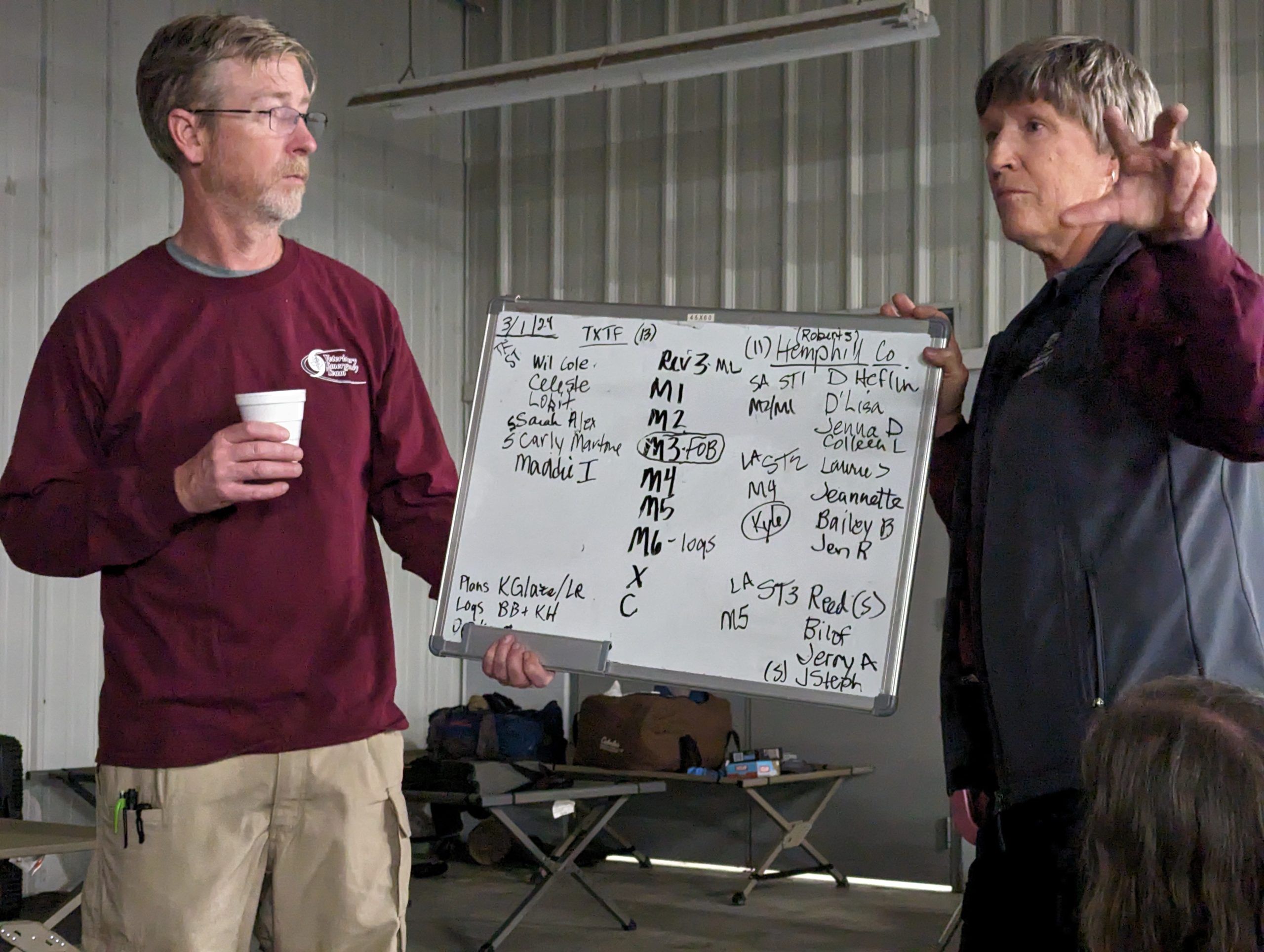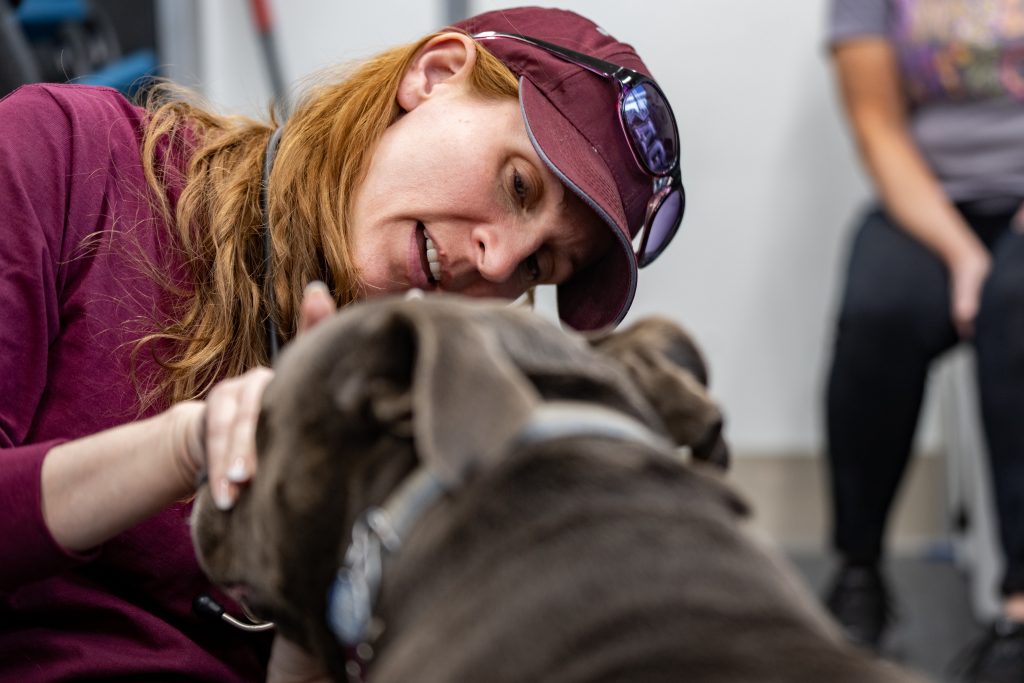Vet response team helps wildfire recovery, graduates

When wildfires burned more than a million acres in the Texas Panhandle in early March, help came in all forms for those affected by the flames.
The Texas A&M University Veterinary Emergency Team was one of those groups that responded. Formed in 2009 after hurricane Katrina, the voluntary team allows vet students the opportunity to take the skills they’ve learned in the classroom and help those in need following a disaster.
Deb Zoran, TAMU professor and director of VET, said during the past 15 years the team has deployed more than 25 times. It took a few years to figure out the right processes, but eventually the group found the right path, being part of both a response team and using its university ties to educate.
VET became part of the rotation schedule at the vet school, and Zoran said veterinary students soon learned what their role is in emergency response is and how to be prepared for such situations, not only for themselves, but also for their communities.
“First responders are in a unique and important and different group, and those that don’t grow up being first responders or aren’t in that world don’t know how to work in it until they get a little bit of training, so we try to help bridge that gap with the veterinary side,” Zoran said.
Smokehouse Creek fire
The team was deployed to the Texas Panhandle after the fires ravaged the areas around Fritch, Borger, Miami and Canadian, Texas, and remained in the area about 10 days.
“No entire communities burned, and there weren’t entire evacuations for the communities and large numbers of companion animals and shelters,” she said. “We would have probably been out there for at least a month or longer as any of those things had happened.”
The homes burned in these areas were ranch houses scattered across a million acres, and “just an entirely different circumstance in that regard,” Zoran said. When the team arrived, members had two primary roles—caring for the search and rescue dogs and assisting the local veterinary community. VET was staged in Canadian, Texas, a community of about 4,000 people with three veterinary clinics.
“One veterinary clinic in town didn’t get impacted directly because the town didn’t burn, but the veterinary clinic on the south side and the veterinary clinic on the north side both were impacted by the fire,” Zoran said.
One clinic burnt and was in full recovery mode, while the mobile veterinarian had fire burn all around his home.
“He had to evacuate all of his animals and was still trying to get things back up and going,” she said. “And so, our role became almost immediately assistance with the veterinarians that had impacts and helping them help their clients as well because these were all huge ranches.”
Ranchers in the area impacted by the fire had to assess the condition of their cattle, and Zoran said these were “large, large, large ranches with thousands of cows in many cases.”
“As soon as the fire went through, it was a matter of finding them. They were all scattered everywhere,” she said.
The cattle that survived the fire were gathered, and injuries were assessed. Euthanasia was performed on site as needed.
“I will tell you that while we were involved in quite a bit of euthanasia early on in those first two or three days, it was nothing compared to what the cowboys were doing because they were the folks that were finding them in canyons, burned horribly and in need of relief from their suffering,” Zoran said. “And so a lot of it was a partnership.”

Trial by fire
The fourth-year vet students that were deployed went voluntarily and were thrown in the middle of the recovery efforts.
“They get an experience like none other because they’re working out in the field and helping with euthanasia decisions and helping with the burn care of any calves or mamas and udders or whatever,” Zoran said. “And when you do this, you’re not working out of your regular practice, right?”
A lot of the time those caring for the livestock and animals didn’t have the necessary supplies, and it forced them to learn how to work in an environment entirely different than school.
“It’s just an incredible opportunity for them and as much as I hate deployments from a perspective if it means somebody’s really had a horrible day or week or month and has lost everything potentially, it’s such a wonderful opportunity for them to get experiences that are going to be life changing and honestly will help them be better practitioners,” she said.
Having to help those who have lost so much gives the students an idea of how precious and fragile life is as well as how important animals are to people.
“We tell them what to expect, but the truth of the matter is it’s a total unknown for them, sleeping on cots and maybe not having the normal kind of food that you’re used to and absolutely not having the normal veterinary things you’re not used to, it’s a little bit daunting,” Zoran said.
Zoran said a few of the students who deployed in the spring graduated in May, and she hopes they got a couple of things from the experience.
She added, “My great hope is that when they go out in the world, they are able to be that resource for their community when that bad day comes because it’s coming for everybody at some point.”
Kylene Scott can be reached at 620-227-1804 or [email protected].
PHOTO: Deb Zoran, Texas A&M University professor and director of the Veterinary Emergency Team, pictured at left, was deployed to Canadian, Texas in response to the Panhandle wildfire outbreaks in early March. (Courtesy of Texas A&M AgriLife Marketing and Communications.)



